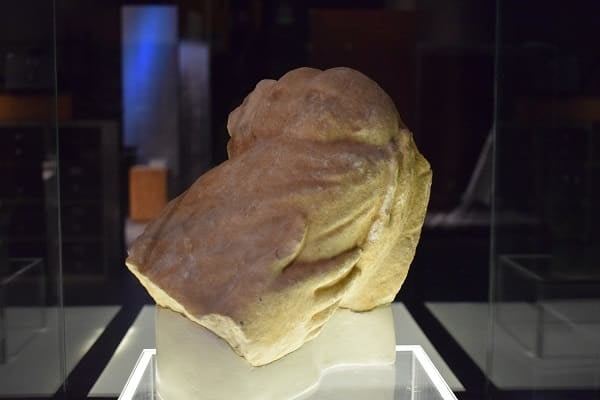

This is the only surviving funerary relief of the ancient Greek world depicting twin babies in the same arms is a poignant example of classical Greek funerary art, often associated with themes of family, loss, and remembrance.
Known as the “stele of the twin babies,” the fragment, featuring two bundled twin babies in the arms of a female figure, was presented to the public for the first time at the National Archaeological Museum of Athens last year. It was discovered in 2008 at a river bank river bank at Menidi, Attica by a scavenger who delivered the precious find to the museum.
The heads of the twins are standing out from their swaddling clothes and the mother’s hands are seen holding their little bodies next to each other.

The “stele of the twin babies” is dated to the 4th century BC.
Archaeologists believe that the unique fragment is part of a tombstone that would have been erected on the grave of a woman who died in childbirth.
This is the only surviving funerary relief of the ancient Greek world depicting twin babies in the same arms, which indicates their common fate as orphans.
The Athens museum published a collage image of the stele of the twin babies with the relief of Philonoe, suggesting a reconstructed image of what the tombstone might have looked like as a whole.

Twin siblings are a frequent theme in ancient Greek mythology.
Olympian gods Artemis and Apollo were twins, born to Zeus and Leto, and so were the children of gods Demeter and Poseidon, Despoina and Arion.
Poseidon and Zeus were said to have fathered more sets of twins with different mortal women.
A few famous sets of twins in Greek mythology were believed to have been born to different fathers each, only one of two being the child of a god, such as the Dioscuri – Castor and Pollux- and their twin sisters, Helen and Clytemnestra.
Prominent mortal couples in Greek mythology were also reported to have given birth to twins; twin sons Thessalus and Alcimenes were among Jason and Medea‘s ill-fated children, while Cassandra and Helenus were twin children of King Priam and Queen Hecuba of Troy, born with prophetic powers.
